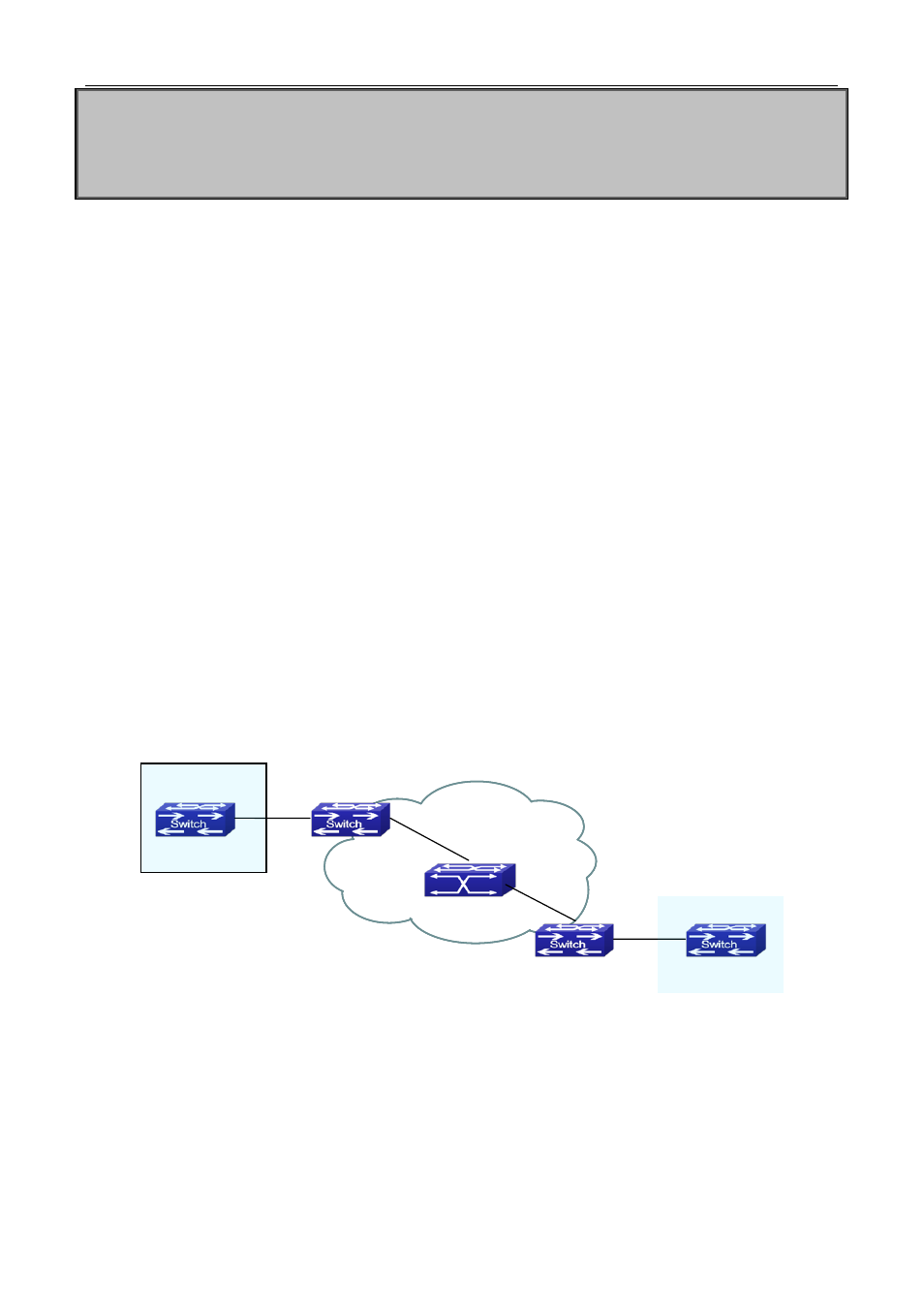4 gvrp troubleshooting, 3 dot1q-tunnel configuration, 1 introduction to dot1q-tunnel – PLANET XGS3-24042 User Manual
Page 134: 4 gvrp troubleshooting -11, Tunnel, Onfiguration, 1 introduction to dot1q-tunnel -11

15-11
Switch(config)#interface ethernet 1/0/11
Switch(Config-If-Ethernet1/0/11)#switchport mode trunk
Switch(Config-If-Ethernet1/0/11)# gvrp
Switch(Config-If-Ethernet1/0/11)#exit
15.2.4 GVRP Troubleshooting
The GARP counter setting for Trunk ports in both ends of Trunk link must be the same, otherwise GVRP will
not work normally. It is recommended to avoid enabling GVRP and RSTP at the same time in switch. If GVRP
needs to be enabled, RSTP function for the ports must be disabled first.
15.3 Dot1q-tunnel Configuration
15.3.1 Introduction to Dot1q-tunnel
Dot1q-tunnel is also called QinQ (802.1Q-in-802.1Q), which is an expansion of 802.1Q. Its dominating idea is
encapsulating the customer VLAN tag (CVLAN tag) to the service provider VLAN tag (SPVLAN tag). Carrying
the two VLAN tags the packet is transmitted through the backbone network of the ISP internet, so to provide a
simple layer-2 tunnel for the users. It is simple and easy to manage, applicable only by static configuration,
and especially adaptive to small office network or small scale metropolitan area network using layer-3 switch
as backbone equipment.
Figure 15-6 Dot1q-tunnel based Internetworking mode
As shown in above, after being enabled on the user port, dot1q-tunnel assigns each user an SPVLAN
identification (SPVID). Here the identification of user is 3. Same SPVID should be assigned for the same
network user on different PEs. When packet reaches PE1 from CE1, it carries the VLAN tag 200-300 of the
user internal network. Since the dot1q-tunnel function is enabled, the user port on PE1 will add on the packet
another VLAN tag, of which the ID is the SPVID assigned to the user. Afterwards, the packet will only be
SP networks
P
PE1
PE2
CE1
CE2
Trunk connection
Trunk connection
Unsymmetrical
connection
Unsymmetrical
connection
Customer
networks1
Customer
networks2
On the customer port
Trunk VLAN 200-300
This port on PE1 is enabled
QinQ and belong to VLAN3
On the customer port
Trunk VLAN 200-300
This port on PE1 is enabled
QinQ and belong to VLAN3